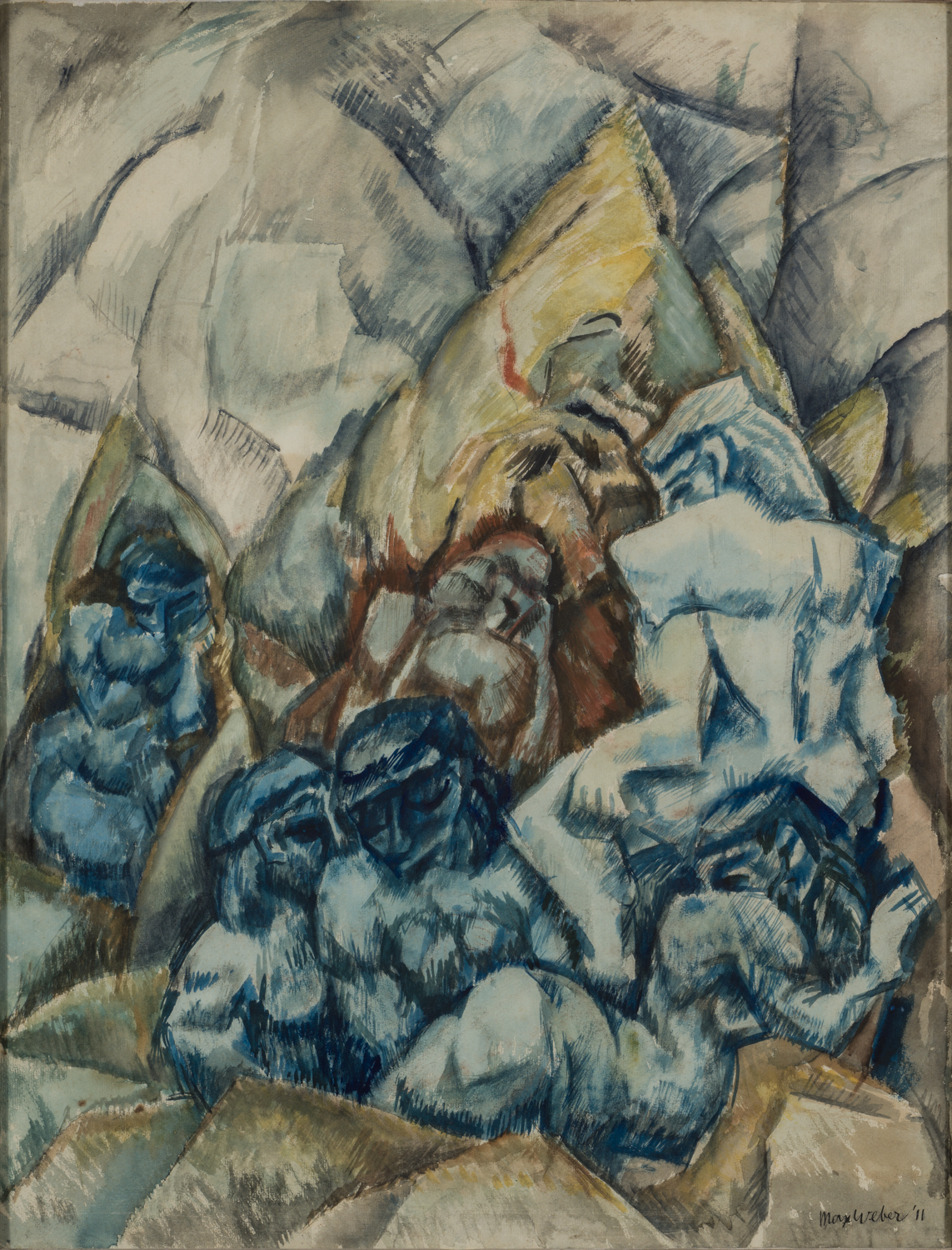Max Weber
Max Weber was born in 1881 in Bialystok, Russia. His family emigrated to New York in 1891 and settled in Brooklyn. The young Weber quickly became immersed in the burgeoning artistic community of New York when he enrolled at Pratt Institute of Brooklyn in 1898. As a student, he trained beneath Arthur Wesley Dow, the influential arts educator. Dow encouraged Weber to explore artistic themes beyond the conventional notions of the Beaux Arts tradition. Drawing from the early modern movement in Europe, Dow stressed the importance of form, color, and composition over a literal depiction of nature. With this foundation, Weber had his sights set on Paris, the art capital of the world.
Weber arrived in Paris in 1905, where he was met with a vibrant and experimental artistic community that would impact the course of his career. Weber attended the prestigious Académie Julian, Académie Colarossi and Académie de la Grande Chaumiere. Further, his entry into the circles of Leo and Gertrude Stein, Henri Matisse, Henri Rousseau, and Pablo Picasso gave him closer access to the avant-garde movements he would later bring to New York. As a pupil in Matisse’s studio art class, Weber experimented with the master’s Fauvist color theories. Weber was also exposed to early developments of Cubism through the work of Picasso and Georges Braque.
In 1909, Weber returned to New York, a city now bursting with dynamic modern life. In the decade following his return, Weber experimented with Cubism and Futurism in his figural compositions. Except for a brief period where he focused on scenes of New York City, Weber primarily worked in a figural style throughout his career. Weber’s early figure paintings completed in New York were colorful, Fauvist nudes in fantastical natural scenes inspired by Rousseau. These gave way to works such as the present, Figures in a Landscape, where “cubist nudes overlap and crowd the composition of stone-like surrounds, as opposed to lounging carefree in Arcadian forests as they had in previous compositions.” (Philbrook Museum of Art, Models & Muses: Max Weber and the Figure, Tulsa, Oklahoma, 2012, p. 15).
Figures in a Landscape is a dynamic composition from Weber’s transitive period of 1909-1912, where he moved beyond his modernist experimentations and entered the mature phase of his career. The work depicts contorted, angular figures in a rocky landscape painted in a flattened perspective. The figures are captured in various stages of motion, showing the artist’s exploration of Cubism, which he would continue to develop later in his career. The architectonic figures also reflect Weber’s influence of primitivism, which he absorbed from the avant-garde art circles in Paris at the turn of the twentieth century. Weber adapted motifs and symbols from African art, ancient Meso-American or Native American art in his own compositions, favored for their perceived simplicity amidst modern culture.
Weber had several one-man shows in New York, and often exhibited at Alfred Stieglitz’ “291” gallery on Fifth Avenue. When Weber exhibited the present work, and other nudes in nature and Cubist still lifes in a solo exhibition at the Murray Hill Galleries in New York in 1912, he was met with derision from American art critics. Weber did not experience the deserved recognition as a pioneering modern American artist until the 1940s, when his work was frequently exhibited and discussed by leading critics. Figures in a Landscape and other works from his early years in New York helped to establish the emergence of modern art in the United States.
Max Weber
Figures in a Landscape, 1911
Watercolor and pencil on paper
24″ x 19″
Signed and dated lower right
Provenance
The artist
Herman Shulman Collection, acquired from the above, circa 1930’s
Private Collection, acquired by descent from the above
Christie’s, New York, November 29, 2007, lot 33, (estimate $50,000-$70,000, sold for $217,000)
Mary Anne and Eugene A. Gargaro, Jr. Collection, Grosse Pointe Shores, Michigan, acquired from the above

